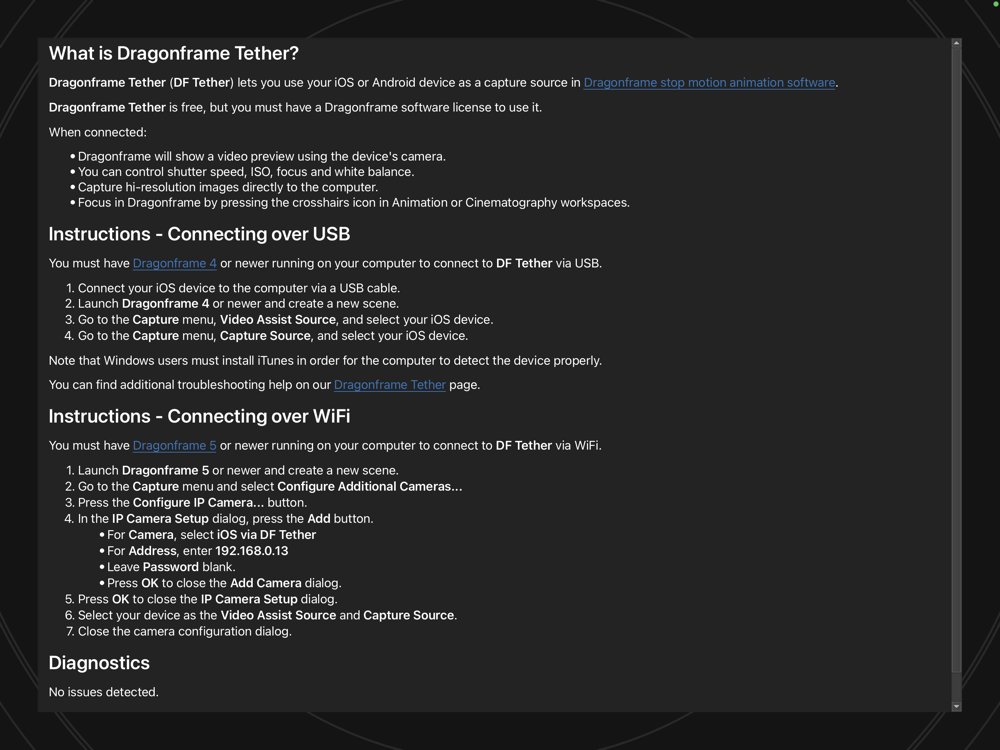

The RamperPro can then control both cameras and both the Stage One and TB3.

You can for example setup a Nikon D800 as camera one on a Stage One slider and you can put a Canon 5Dmkiii as camera two on a TB3 pan and tilt head. These cameras can run different ramping profiles and each camera can be put on their own motion control device. The RamperPro can control two cameras and interface with two motion control rigs at the same time. Using multiple motion control rigs at the same time You do this by setting the "Post delay time" on the Camera 1 and Camera 2 system settings in the system settings menu.

That way you are absolutely sure that the shutter is closed before the camera is moved. You might want to have a (short) delay after a shot is taken by the RamperPro and the moment that the motion hardware is triggered.
#HOW TO USE DRAGONFRAME HOW TO#
How to delay the motion control hardware after a shot is taken There is can either define if the ring or tip acts as an output, needed to trigger an extern system or as an input, so that the RamperPro can receive triggers from external systems. You can define the behavior or both this ring and tip in the I/O settings menu in the system menu. The tip and ring of the plugs are connected to the RamperPro hardware. You connect motion control hardware to the I/O functionality of the RamperPro with a so called 2.5mm Tip Ring Sleeve (TRS) plug. It will trigger DragonFrame to move all axis to the next position when a shot is taken by the RamperPro. Here the RamperPro acts like a DragonFrame remote controller.

The RamperPro features an experimental DragonFrame integration mode. The RamperPro will then be triggered by that timer. In that case you set the external hardware to be the external timer. Some motion control hardware like the DitoGear solutions cannot handle an external intervalometer. This isolator acts like a switch that can trigger motion control hardware like the MX2, MX3 and TB3. You would need to use the I/O isolator when you use this mode. A big advantage is that the interval fairing capability of the RamperPro can be used because the RamperPro sets the changing interval. This is especially working good in a shoot-move-shoot configuration. Motion control hardware can be triggered by the RamperPro to move all axis to the next position. In this setup the the RamperPro determines the timings and it controls the camera. There are currently three different types of integration possible: A drawback of this mode is that you cannot use interval fairing because the RamperPro is not dictating the interval. The motion control hardware can then signal the RamperPro to take a picture. You can then configure the RamperPro to be triggered by an external signal. Some hardware like DitoGear hardware doesn't have this possibility. This needs to be supported by your hardware. That way you are sure that the exposure is finished and that it is safe to move your camera. Its probably best if the RamperPro triggers the motion control hardware to move to the next position. You might need special adapters to connect external hardware like our I/O isolator or the ElysiaVisuals DragonFrame adapter. The first I/O port is tied to camera one, the second one to camera two. The MoCoBus connectors are for future use when more MoCoBus motion control hardware becomes available (from for example DynamicPerception). These are the double RJ45, network connectors next to the light sensor connector. There are also two MoCoBus connectors available. The two ext ports (ext1 and ext2) at the back of the RamperPro can be used to integrate the RamperPro with motion control hardware. That way you can use the DitoGear controllers with the RamperPro for example. You can also use external intervalometer to trigger the RamperPro. The RamperPro can interface with all current motion control hardware like the Dynamic Perception MX2 and MX3 motion controllers or the eMotimo TB3.


 0 kommentar(er)
0 kommentar(er)
